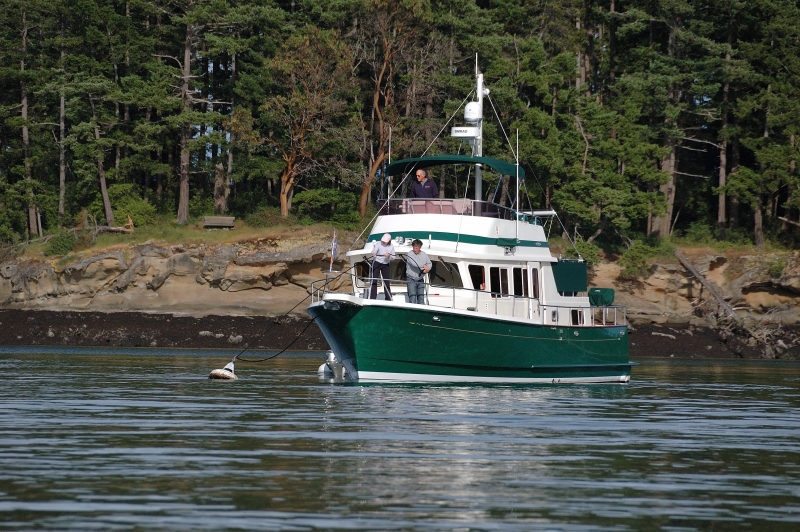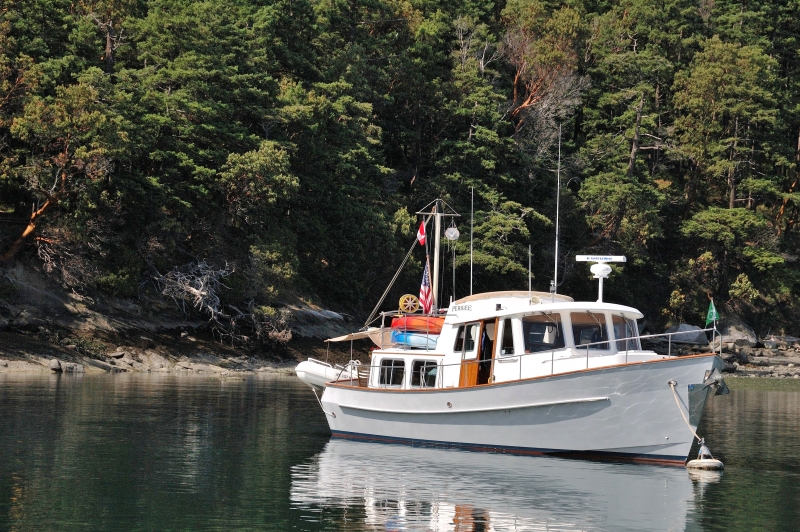Capturing a Mooring Buoy
17th June 2022
Hooking a buoy and threading the mooring line through the “O” ring need not be a difficult task. Capturing a mooring buoy can be a challenging maneuver for many boaters, but if done properly it can be a simple and stress-free task.

The objective of capturing a mooring buoy is to attach one end of a mooring line to the boat and pass the other end through the mooring ring and back to the vessel. This is where things can get challenging. As with any other procedure, planning and preparation is the key. Plan your strategy and walk the crew through it beforehand, making sure all know their roles and are comfortable with them. The plan should address special circumstances like opposing wind and current, proximity to other boats or what to do if the buoy is missed on the first attempt.
Establish hand signals or review existing ones between helmsman and crew so you can pass along information, such as distance and direction to the mooring buoy, speed of approach and so on. If you have two-way headsets, it’s a good idea to wear them as they can save a lot of time.
In addition to the boat hook, have the mooring line ready. Some boaters like to wear gloves to protect their hands during the procedure.

If the anchor on the bow pulpit is going to interfere with the mooring line move it in advance.
If the boat is equipped with thrusters turn them on. Waiting until you need them may be too late.
If towing a dinghy, shorten the painter to prevent it from fouling the prop, or secure it alongside with a bow and stern line to ensure it stays firmly alongside when maneuvering.
Determine wind and current direction, and finally put on PFDs. More than one skipper or crewmember has slipped and found themselves in the water.
The process of picking up a mooring buoy is simple once prepared. Typically want to approach a buoy slowly from dead downwind or down current, which provides better control and maneuverability. Increase throttle as required to overcome the effects of wind or current.
Many boaters pick up the mooring buoys from the cockpit at the stern when the bow is simply too high to grab onto a ring effectively. Approaching slowly alongside the buoy until it’s at the stern quarter. The gear(s) are slipped into reverse to stop the forward momentum and then in neutral.

The crew hooks the buoy then threads the line through the ring and then releases the buoy with the hook. With the skipper remaining at the helm for any final adjustments in boat position, the crew walks to the bow with mooring line in hand, letting the breeze and/or current slowly carry the boat back away from the buoy. Once at the bow, cleat the two ends. When the boat is secured, the skipper begins the shutdown process.
With a displacement hull trawler, the procedure is a little different. The deck hand feeds a line through the bow hawse and loops it over the bow cleat. The bitter end is taken aft, outside all structures and rigging, to the gate in the side rail near the cockpit.
Due to the boat’s configuration, as the boat approaches the buoy the helmsman loses sight of the buoy. The deckhand stands near the pilothouse door and calls corrections, if needed, to bring the buoy close to the hull. The transmission is in and out of gear to move the vessel dead slow. When the deckhand sees the buoy come alongside the gate the deckhand feeds the line through the ring and walks it back to the bow to tie it off.

Picking up a buoy from the bow of a sailboat or low-profile powerboat may also be done gracefully. With a crew member on the bow with a boathook, approach slowly from downwind or down current, which provides better control and maneuverability. Once the mooring buoy is a few feet off the bow, slow down or gently reverse your engine to halt forward motion. The goal here is to gauge boat speed and wind and current effect, so that once the boat is in neutral it coasts to a stop with the bow even with the mooring, at which time the deckhand hooks the buoy ring then slip the mooring line through the ring and ties it off before the current and/or wind pushes you away.
There you have it! With some preparation and practice, capturing a mooring buoy doesn’t need to be stressful.
(Deane Hislop – In Partnership with Freedom Marine)


